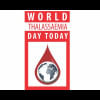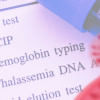Thalassaemia in Bangladesh: Prevention strategy

Thalassaemia is the most common congenital disorder in Bangladesh. It is estimated that nearly 14,000 thalassaemic children are born every year here.
Treatment facilities are limited due to the high cost of medicine and limited availability of blood for transfusion. Furthermore, medicines are not available readily other than in specialised thalassaemic centres in Dhaka and Chittagong. As treatment is expensive and lifelong, majority of the patients hardly afford proper treatment and thus suffer from the complications of the disease.
Awareness of the disease and carrier detection has been partially successful in some countries of the world, especially, where abortion is not legal. Prevention of births of thalassaemic children is the best solution. But prevention of births of thalassaemic children by creating awareness, dissuasion of marriage between carriers or identify carrier couples before marriage and to offer counselling to separate has limited success.
Prenatal diagnosis and abortion of affected fetus have been most successful in preventing the births of thalassaemic children in many countries of the world like Cyprus, Greece and Iran. Prenatal diagnosis is the way to know before birth whether the fetus has thalassaemia or not.
Bangladesh government has taken note of the magnitude of problem of thalassaemia and is recently creating awareness of the disease, which is a very commendable step. It is very important that besides creating awareness of the disease and carrier detection, the government must also simultaneously make facilities for prenatal diagnosis. DNA lab should be immediately set up in each division with proper training of gynaecologists for collection of samples and training of molecular biologists or biochemists for DNA analysis.
Prenatal diagnosis is done for determining the status of the fetus if the fetus is normal, carrier or thalassaemic. It is done by two methods described here.
Chorionic villus sampling (CVS)
A small sample is obtained from the developing placenta which has the same genetic makeup as the fetus. The tissue from the placenta is obtained by means of a needle inserted through the abdominal wall under ultrasound guidance. A small amount of chorionic villi material is aspirated. The technique can be used at any stage from 11 weeks onwards.
CVS is preferable as it is done in the first trimester of pregnancy within the limits laid down by abortion law in many countries. It also reduces the emotional stress associated with late pregnancy diagnosis where there are complications.
Amniocentesis
Amniocentesis is an analysis of amniotic fluid. This procedure is normally done after 15th weeks of pregnancy.
The procedure is an aspiration of about 15-20 ml of fluid from the amniotic cavity surrounding the fetus through the help of a small needle inserted through the abdomen under ultrasound guidance.
The main disadvantage in this method is the lateness of the procedure and diagnosis. Abortion here is psychologically traumatic for the mother. After collection of sample, DNA analysis is done to determine whether the fetus is affected, a carrier or normal. If the fetus is affected which means that s/he will be born with thalassaemia, the choice is with the parents to abort or carry on with the pregnancy.
Dhaka Shishu Hospital Thalassaemia Centre has recently started a DNA lab for analysis of chorionic villus and amniotic fluid sample to detect the status of fetus where the parents are carriers of the thalassaemia or has a previous affected child.
Young couples should test their blood to know the carrier status and if both are carriers of thalassaemia they should go prenatal diagnosis to assess the status of their fetus preferably in early pregnancy (from 11 weeks onwards) and if affected, they may opt for abortion as birth of a thalassaemic child leads to great financial and mental strain.
The writer is the President of Dhaka Shishu Hospital Thalassaemia Centre.
Email: [email protected]

 For all latest news, follow The Daily Star's Google News channel.
For all latest news, follow The Daily Star's Google News channel. 





Comments